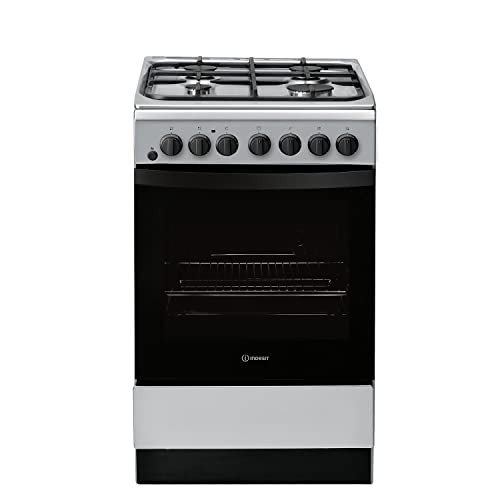The Complete Guide to Ovens and Hobs: Choosing the Right Appliances for Your Kitchen
When it concerns creating cooking masterpieces, the importance of quality kitchen appliances can not be overemphasized. Ovens and hobs are the heart of any kitchen, making it possible for home cooks and professional chefs alike to develop, bake, and sauté delicious meals. Understanding the different types of ovens and hobs, along with their functions and performances, is essential for making informed getting choices. This post provides an extensive take a look at ovens and hobs, assisting you navigate the choices readily available so that you can enhance your kitchen's performance and adaptability.
Comprehending Ovens
Ovens are necessary for cooking and baking and been available in various types to fulfill diverse cooking needs. Here is a summary of the most common kinds of ovens:
1. Conventional Ovens
Traditional ovens work by heating the air inside with gas or electric elements. They are ideal for baking cakes, roasting meats, and cooking casseroles.
2. Convection Ovens
These ovens utilize a fan to distribute hot air, offering an even temperature throughout, which can substantially lower cooking times. They are ideal for baking cookies or roasting veggies.
3. Microwave Ovens
Microwaves prepare food rapidly using electro-magnetic radiation. They are perfect for reheating leftovers or defrosting frozen foods however are not appropriate for browning or crisping.
4. Wall Ovens
Including a wall oven into your kitchen design can save space and produce a streamlined aesthetic. They operate similar to conventional or stoves however are built into the wall for easy gain access to.
5. Variety Ovens
These ovens combine stovetop burners with an oven, offering adaptability for those who prefer a single home appliance for all cooking needs.
| Type | Cooking Method | Best For |
|---|---|---|
| Traditional | Electric/Gas | Baking, roasting |
| Convection | Air blood circulation | Quick cooking, even baking |
| Microwave | Electromagnetic | Reheating, thawing |
| Wall Ovens | Electric/Gas | Space-saving, smooth design |
| Variety Ovens | Electric/Gas | Versatile cooking |
Exploring Hobs
Hobs, likewise called cooktops or stovetops, offer the surface to cook pans directly over a heat source. Like ovens, hobs are available in various types, which can be categorized as follows:
1. Gas Hobs
These hobs use a flame for cooking and supply immediate heat control. They are favored by lots of chefs for their responsiveness and precision.
2. Electric Hobs
Electric hobs use coils or flat surface areas to heat pans. They provide a consistent heat source, but they may take longer to cool down compared to gas hobs.
3. Induction Hobs
Induction hobs utilize electromagnetic energy to heat pots and pans directly, making them extremely effective and quicker to cook. They are also much easier to clean up as the surface remains fairly cool.
4. Strong Plate Hobs
These are older innovation that uses solid metal plates to supply heat. They are long lasting but are less efficient than contemporary choices.
| Type | Heat Source | Benefits | Downsides |
|---|---|---|---|
| Gas Hobs | Flame | Immediate heat control | Needs gas connection |
| Electric Hobs | Electric coils | Consistent heat | Slower to cool off |
| Induction Hobs | Electromagnetic | Fast cooking, energy-efficient | Needs suitable pots and pans |
| Strong Plate Hobs | Solid metal plate | Resilience | Less effective |
Choosing the Right Appliances
Choosing the best oven and hob for your kitchen involves considering different aspects:
1. Area and Layout
Procedure your kitchen location to figure out the size and placement of the oven and hob. Make sure there is sufficient ventilation, particularly for gas devices.
2. Cooking Style
Consider how frequently you prepare and the kind of meals you prepare. A convection oven may suit avid bakers, while somebody who frequently stir-fries may choose an induction hob.
3. Energy Source
Select the energy source that best fits your way of life. Gas offers instant control, while electric and induction hobs offer ease of usage and are often more energy-efficient.
4. Budget
Identify your budget for kitchen appliances. Online Cooker Sales and hobs vary significantly in price, depending on functions and brand names. Focus on necessary features that meet your requirements.
5. Functions
Search for functionalities such as self-cleaning options, wise technology compatibility, specific rack configurations for ovens, and safety functions for hobs.
Regularly Asked Questions (FAQs)
Q1: What is the distinction between a traditional oven and a convection oven?A1: Conventional ovens heat the air inside without fans, while stove make use of a fan to flow hot air for more even cooking. Q2: Can I use aluminum pots and pans on induction hobs?A2: No, induction hobs need ferrous (magnetic )materials like cast iron or stainless steel to work successfully. Q3: Do gas hobs heat much faster than electric hobs?A3: Yes, gas hobs offer instant heat, making them faster for cooking compared to electric hobs. Q4: Is it safe to use a microwave oven?A4: Yes, when utilized according to the producer's guidelines, microwave are considered safe for food preparation.
Q5: How frequently must I clean my oven and hob?A5: For optimum efficiency, clean your oven routinely, especially after spills. Hobs ought to be cleaned down after each usage
to prevent buildup. Ovens and hobs
are important parts of a well-equipped kitchen. Understanding the different types, their functionalities, and the considerations associated with purchasing
them can significantly enhance cooking experiences. Whether one is a casual home cook or a professional chef, investing time in selecting the ideal devices can lead to culinary success and complete satisfaction in the kitchen. By focusing on functions that align with your cooking design, energy sources that fit your home, and budget factors to consider, you can create an effective office that influences culinary imagination.

